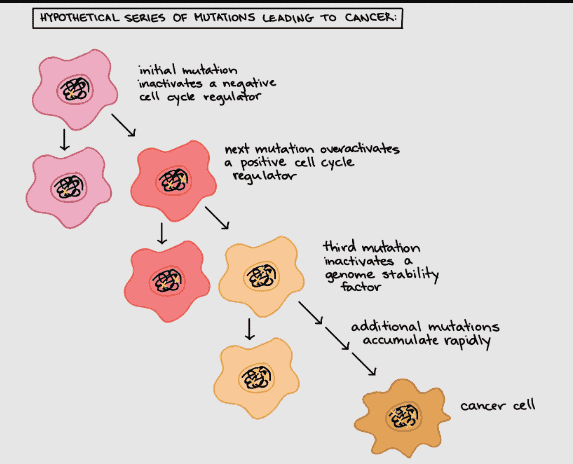Understanding Cancer Metastasis: A Guide for Patients and Families
Published on October 11, 2023
Updated on May 27, 2024
Published on October 11, 2023
Updated on May 27, 2024

Table of Contents
When cancer spreads from its original site to other parts of the body, it’s known as metastatic cancer. This article aims to provide information about cancer metastasis, the common areas of metastasis based on the origin of the cancer, observable signs and symptoms, and how families can support their loved ones as the cancer progresses.
Metastatic cancer is when cancer cells spread from the point of origin to distant areas in the body. Unlike normal cells, cancer cells can grow outside of their original location. Metastatic tumors can grow into nearby tissue, travel through the bloodstream, or move through the lymph system.
Virtually all types of cancers can potentially metastasize, but certain types are more likely to spread. Some common types include:
The most common areas where cancer tends to spread:
| Cancer Origin | Common Sites of Metastasis |
|---|---|
| Bone | Liver, Lungs, Peritoneum |
| Brain | Various parts of brain |
| Breast | Lungs, Liver, Bones, Brain |
| Colorectal | Liver, Lungs, Peritoneum |
| Kidney | Lungs, Bones, Liver, Brain |
| Laryngeal | Lungs, Bone, Liver, Neck, Trachea |
| Liver | Lungs, Bones, Lymph Nodes |
| Lung | Bones, Lymph Nodes, Lungs, Liver |
| Ovary | Peritoneum, Liver, Lungs |
| Pancreas | Liver, Lungs, Peritoneum |
| Parotid Gland | Lungs, Lymph Nodes, Nerves in the Face and Neck |
| Prostate | Bones, Lymph Nodes, Lungs, Liver |
| Stomach | Liver, Lungs, Peritoneum |
| Thyroid | Lungs, Bones, Lymph Nodes |
Signs of metastasis can vary depending on the affected area. Some common observable signs include:
As cancer progresses, your support becomes crucial. Here are some ways to help your loved one:
Sometimes, your loved one may want to talk about how they feel or what they are afraid of. You can be a good listener and tell them you are there for them. You can also say things that make them feel hopeful and loved, such as “I’m proud of you” or “You are not alone.”
Your loved one may have pain or discomfort because of the cancer or the treatments. You can help them by giving them their medicines, making them comfortable in bed, or massaging their hands or feet. You can also ask them what they need or want to feel better.
Your loved one may be unable to do things they used to, such as cooking, cleaning, or driving. You can help them by doing these things for them or asking someone else to help. You can also help them get to their doctor appointments and keep track of their medicines and test results.
Your loved one may have things they want to say or do before they die. You can help them by having honest and respectful conversations with them. You can ask them about their wishes and preferences, such as where they want to die, who they want to see, or what they want to do. You can also help them write a will, a letter, or a video message for their loved ones.
Your loved one may want to spend time with you and do things they enjoy. You can help them by being with them and doing activities that make them happy, such as watching a movie, listening to music, or playing a game. You can also share memories, stories, or jokes with them and make them laugh.
Your loved one may need different care from various people, such as doctors, nurses, or hospice workers. You can help them by working with these people and ensuring they get the best care possible. You can also ask questions, share information, and express your concerns or opinions.
Understanding metastatic cancer and its signs is crucial for patients, caregivers, and nurses. By knowing the common sites of metastasis, observing symptoms, and providing compassionate support, families can enhance the quality of life for their loved ones on their end-of-life journey.
Clinical Landscape of Cancer Metastases
Metastasis (Metastatic Cancer): Definition, Biology & Types
Cleveland Clinic – Metastasis: Definition, Biology & Types
National Cancer Institute – Metastatic Cancer: When Cancer Spreads
American Cancer Society – Understanding Advanced and Metastatic Cancer
NCBI – On the Origin of Cancer Metastasis
The Importance of Caregiver Journaling
Reporting Changes in Condition to Hospice
As an Amazon Associate, I earn from qualifying purchases. The amount generated from these “qualifying purchases” helps to maintain this site.
Cancer Caregiving A-to-Z: An At-Home Guide for Patients and Families
Things I Wish I’d Known: Cancer Caregivers Speak Out
CaringInfo – Caregiver support and much more!
Surviving Caregiving with Dignity, Love, and Kindness
Caregivers.com | Simplifying the Search for In-Home Care
As an Amazon Associate, I earn from qualifying purchases. The amount generated from these “qualifying purchases” helps to maintain this site.
Take Back Your Life: A Caregiver’s Guide to Finding Freedom in the Midst of Overwhelm
The Conscious Caregiver: A Mindful Approach to Caring for Your Loved One Without Losing Yourself
Everything Happens for a Reason: And Other Lies I’ve Loved
Final Gifts: Understanding the Special Awareness, Needs, and Communications of the Dying
Providing Comfort During the Last Days of Life with Barbara Karnes RN (YouTube Video)
Preparing the patient, family, and caregivers for a “Good Death.”
Velocity of Changes in Condition as an Indicator of Approaching Death (often helpful to answer how soon? or when?)
The Dying Process and the End of Life
As an Amazon Associate, I earn from qualifying purchases. The amount generated from these “qualifying purchases” helps to maintain this site.
Gone from My Sight: The Dying Experience
The Eleventh Hour: A Caring Guideline for the Hours to Minutes Before Death